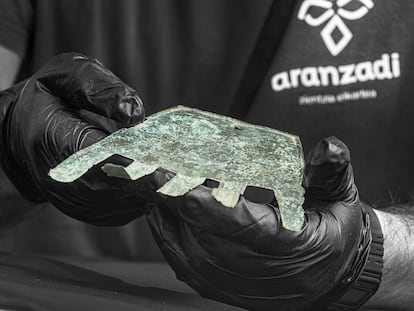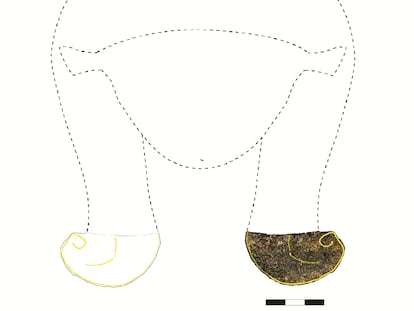Apache historian questions official narratives: ‘How is it possible that 120 soldiers cut off the feet of 8,000 of our brave Indigenous people?’
Alfonso Borrego – the great-grandson of Geronimo, the great Apache leader – says that, while the Spaniards certainly harmed his people, Anglo invaders were the ones who committed genocide against American Indians
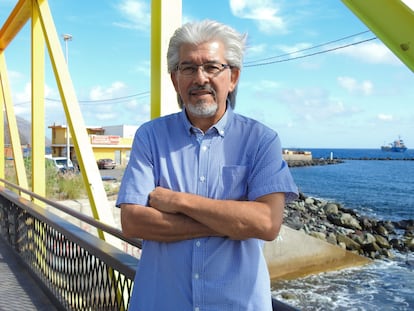

Alfonso Borrego is the great-grandson of Geronimo, a prominent leader and medicine man from the Bedonkohe band of the Apache people. Geronimo was known for his fearlessness – he resisted both the Mexican and American militaries when they attempted to remove his people from their tribal lands in the late1800s.
Borrego, 66, has spent years researching what happened to his people and his great-grandfather. While speaking with EL PAÍS, he discusses the various conflicting narratives that have been pushed over the past century. Some say that the Spanish drove the Indigenous to near-extinction in the United States, while others suggest that the Anglo colonizers were far more cruel against civilian populations.
Born in El Paso, Texas, Borrego generally rejects the “official history” about the conquest that has been constructed by the United States.
“At school, they didn’t let us speak Spanish. They told us that the Spaniards were ‘the worst of the worst.’ But that doesn’t match my research.”
Borrego has also delved into the difficult final years of Geronimo, who surrendered to the American army in 1886 and, until his death in 1909, was “exhibited at fairs and parades by the gringos” in a humiliating fashion.
An engineer and historian by profession, Borrego has become a highly sought-after figure at history conferences in America and Europe.
“I’ve visited [Indigenous] reservations, I’ve met with the tribal chiefs, with Indigenous people, students… I’ve offered a contrast to what the textbooks say. There certainly was an Indigenous genocide, but while the Spaniards committed atrocities, the Anglos were the ones who carried it out,” he affirms in a conversation with EL PAÍS during his brief visit to Madrid.
“Indian chiefs on reservations don’t want to talk about this, because they fear reprisals from the government and losing the casinos that they’ve been given as compensation.”
Borrego – who serves as president of the Cultural Heritage Society of the Royal Road of the Interior Lands – thinks that it’s crucial to uncover “the truth about what happened.”
As an example, he mentions the story of Juan de Oñate (1550-1626), the first Spanish conquistador to go up the Rio Grande, into New Mexico. Oñate is accused of cutting the right foot off of 8,000 Indigenous people.
“That’s what it says in the history books, at least…”
For nine years, Borrego travelled all over New Mexico to identify “the tremendous atrocities that allegedly took place.” He came across a document drafted by a Spanish sergeant on May 1, 1598, which described how Oñate, upon encountering two Indigenous people, gave them clothes and gifts. Subsequently, more Indigenous showed up, also to receive gifts.
“I thought, ‘How strange!’ Weren’t the Spanish supposed to kill them and cut off their heads?”
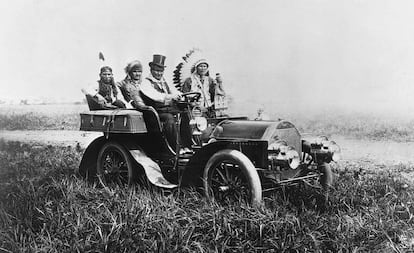
Borrego kept looking for proof about the 8,000 Indians who lost their feet to the Spaniards. However, again and again, the heads of the tribes couldn’t offer up details, graves or human remains. They merely assured him that it had happened.
The historian notes that Oñate’s entourage was made up of 539 people – 120 were soldiers, nine were priests and the rest were women and children.
“How is it possible that 120 soldiers managed to cut off the feet of 8,000 of our brave people?”
Tribal elders told him that the Spaniards had rifles.
“Rifles? The old ones that took several minutes to load, where the bullets went all over the place? Our people are warriors – it’s not like them to simply not fight. One hundred and twenty soldiers against 8,000 Indigenous people? I told the chiefs, ‘It’s better that you don’t tell anyone that story, it’s shameful.’ They looked at me with resentment and walked away.”
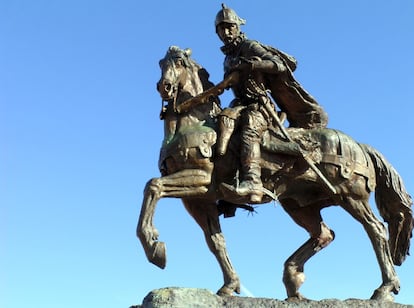
Borrego is a promoter of the recovery of the Royal Road, the Camino Real – the 1,500-mile south-north road that the conquistadors used to reach present-day New Mexico. Only the Mexican part is declared a World Heritage Site by UNESCO.
“And why not the US side?” he wonders. “I asked the United States National Park Service about this… they just say that the Spanish carried out tremendous atrocities. They tell me to leave it alone.”
The reservations where the Indians were sent “are all in States with Hispanic names: Montana, Colorado, California, New Mexico... in the north, there are none, except one for Indians who fled Canada. Why aren’t there reserves in Ohio, Tennessee, Kentucky, Georgia, Virginia, or New York? Why?”
The answer, according to him, lies in the arrival of the English in Massachusetts, years after Oñate showed up.
“They were dying of cold, they were all going to perish. The Wampanoag Indians felt sorry for them – they taught [the British] how to plant corn, fish and hunt to survive. But where are the Wampanoag today? Not one left! Why? Because the English killed them all. People say no, it was smallpox. Smallpox? Then why were the Indigenous under Spanish rule not affected?”
“The truth is that the Anglos wiped them out in the north. That’s what really happened.”
Regarding Geronimo, his great-grandfather, Borrego recalls that he was a shaman, not a chief.
“He was a very dignified man, a representative of the tribes. And the gringos hunted him down, crushed him, took away his dignity, took him to prison in Florida to separate him from his people… they started touring him all over the country, like a Hollywood show. He died without dignity. The US presidency did that.”
Tu suscripción se está usando en otro dispositivo
¿Quieres añadir otro usuario a tu suscripción?
Si continúas leyendo en este dispositivo, no se podrá leer en el otro.
FlechaTu suscripción se está usando en otro dispositivo y solo puedes acceder a EL PAÍS desde un dispositivo a la vez.
Si quieres compartir tu cuenta, cambia tu suscripción a la modalidad Premium, así podrás añadir otro usuario. Cada uno accederá con su propia cuenta de email, lo que os permitirá personalizar vuestra experiencia en EL PAÍS.
¿Tienes una suscripción de empresa? Accede aquí para contratar más cuentas.
En el caso de no saber quién está usando tu cuenta, te recomendamos cambiar tu contraseña aquí.
Si decides continuar compartiendo tu cuenta, este mensaje se mostrará en tu dispositivo y en el de la otra persona que está usando tu cuenta de forma indefinida, afectando a tu experiencia de lectura. Puedes consultar aquí los términos y condiciones de la suscripción digital.
More information
Archived In
Últimas noticias
Welcome to the post-religion era: The idea of Christianity as the absolute truth has become obsolete
‘I thought you would like it’: The risky sexual practice popularized by TV shows and TikTok
The digitalization of tourism: ‘They promise experiences and gave us the worst possible one’
Mexican peso defies uncertainty with forecasts of a new period of stability in 2026
Most viewed
- Sinaloa Cartel war is taking its toll on Los Chapitos
- Reinhard Genzel, Nobel laureate in physics: ‘One-minute videos will never give you the truth’
- Oona Chaplin: ‘I told James Cameron that I was living in a treehouse and starting a permaculture project with a friend’
- Why the price of coffee has skyrocketed: from Brazilian plantations to specialty coffee houses
- Silver prices are going crazy: This is what’s fueling the rally
